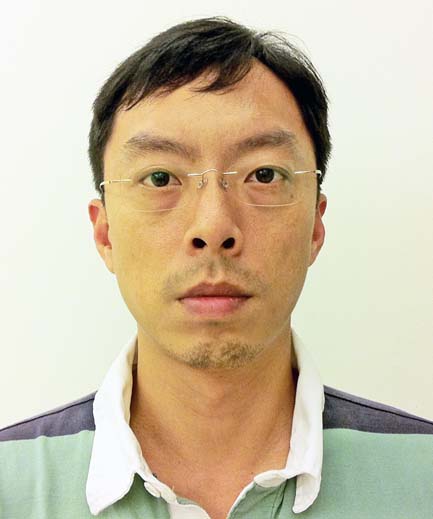Che Alex Ma

Affiliations
Genomics Research Center, Academia Sinica
Biography
Dr. Ma received his B.S. (1992) from National Taiwan University, and M.S. (1996) and Ph.D. (2000) degrees in Chemistry from University of Pennsylvania. He was at University of California, San Diego and the Scripps Research Institute as a postdoctoral fellow (2001-2004). He started his independent career as Assistant Research Fellow at Genomics Research Center, Academia Sinica in 2004 and is currently an Associate Research Fellow.
Dr. Ma is a recipient of the Skaggs Postdoctoral Fellowship (2001), the Keystone Symposium Scholarship (2002), the TWAS Young Affiliate (2009-2013), Academia Sinica Significant Research Achievements (2009), the Academia Sinica Award for Junior Research Investigators (2010), the Young Scholar Award of Tien-De Li Biomedical Foundation (2011), Academia Sinica Career Development Award (2013), Exceptional Merit in Academic Award Taiwan Rotary Foundation (2014) and Taiwan Bio-Development Foundation endowed Chair in Biotechnology (2014).
His research interests are in the areas of structure and function of membrane proteins and drug discovery.
Abstract
Structural Biology in Infectious Diseases
Che Alex Ma
Two topics of infectious diseases using structural biology and chemical biology approaches will be presented. First, bacterial transpeptidase and transglycosylase on the surface are essential for cell wall synthesis and many antibiotics have been developed to target the transpeptidase, but the problem of antibiotic resistance has arisen and caused a major threat in bacterial infection.
The transglycosylase has been considered to be another excellent target, but no antibiotics have been developed to target this enzyme. We determined the crystal structure of the Staphylococcus aureus membrane-bound transglycosylase, monofunctional glycosyltransferase (MGT), in complex with a lipid II analog to 2.3 angstrom resolution. Our results showed that the lipid II-contacting residues are not only conserved in wild type and drug-resistant bacteria, but also significant in enzymatic activity. Mechanistically, we proposed that K140 and R148 in the donor site, instead of the previously proposed E156, are used to stabilize the pyrophosphate leaving group of lipid II and E100 in the acceptor site acts as general base for the 4-OH of GlcNAc to facilitate the transglycosylation reaction.
This mechanism, further supported by mutagenesis study and the structure of MGT in complex with moenomycin in the donor site, provides a new direction for antibacterial drugs design. Second, the effect of glycosylation on influenza virus major surface glycoprotein hemagglutinin (HA) with regards to its role in receptor binding and immune response has been studied, and a new strategy for molecular vaccine design was discovered.

